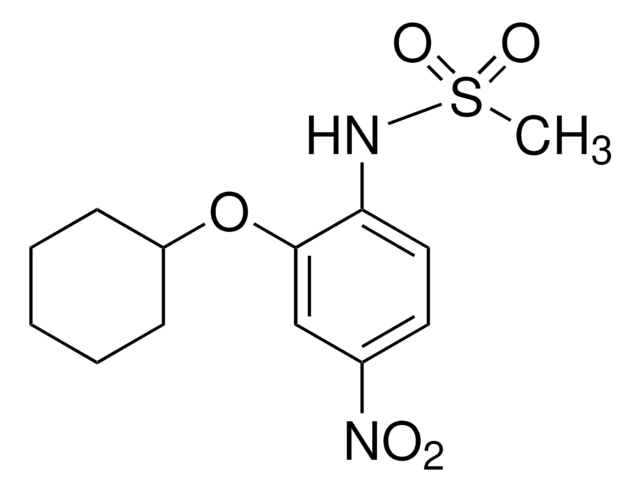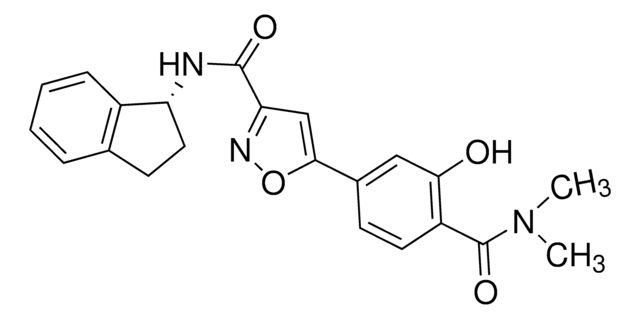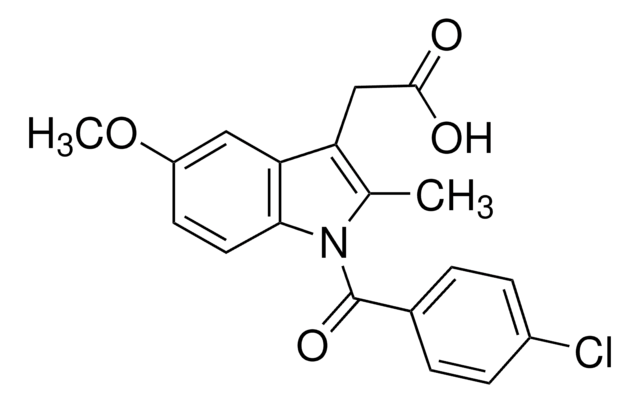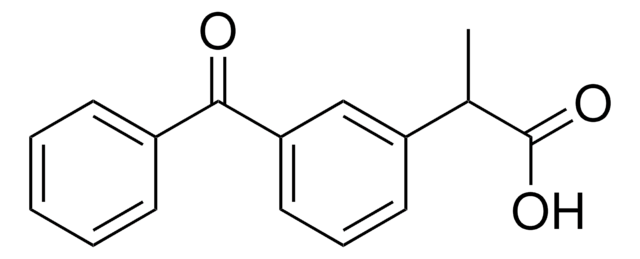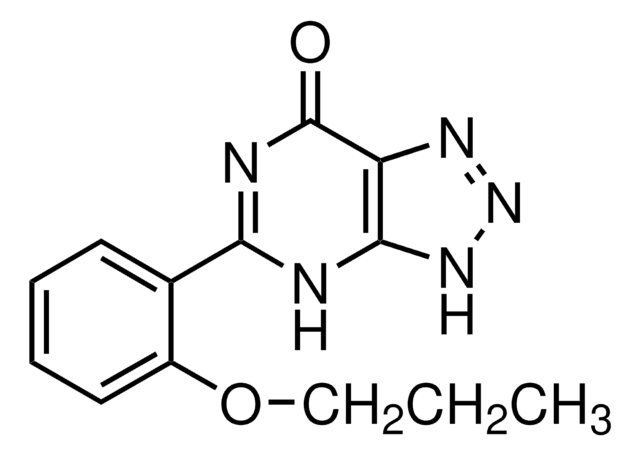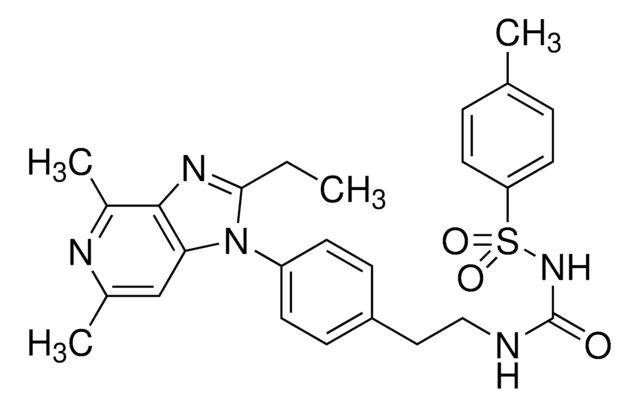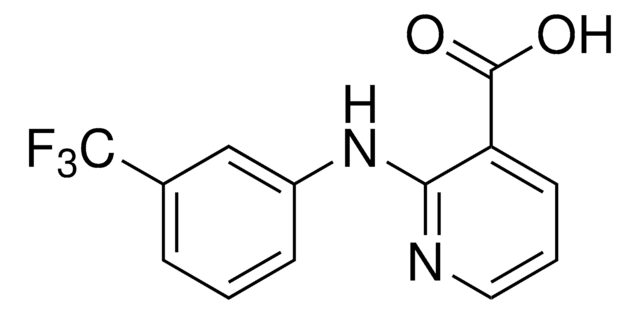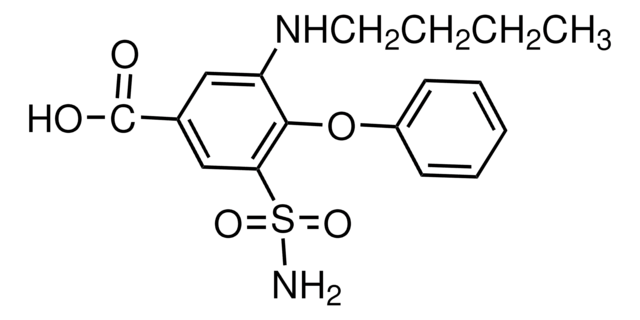S3065
SC 19220
≥98% (HPLC), solid
Synonyme(s) :
2-Acetylhydrazide 10(11H)-carboxylic acid, 8-Chloro-dibenz[b,f][1,4]oxazepine-10(11H)-carboxylic acid
About This Item
Produits recommandés
Essai
≥98% (HPLC)
Forme
solid
Couleur
white
Pf
190-191 °C (lit.)
Solubilité
DMSO: soluble 10 mg/mL
H2O: insoluble
Chaîne SMILES
CC(=O)NNC(=O)N1Cc2ccccc2Oc3ccc(Cl)cc13
InChI
1S/C16H14ClN3O3/c1-10(21)18-19-16(22)20-9-11-4-2-3-5-14(11)23-15-7-6-12(17)8-13(15)20/h2-8H,9H2,1H3,(H,18,21)(H,19,22)
Clé InChI
KNURFLJTOUGOOQ-UHFFFAOYSA-N
Informations sur le gène
human ... PTGER1(5731)
rat ... Ptger1(25637)
Application
Actions biochimiques/physiologiques
Code de la classe de stockage
11 - Combustible Solids
Classe de danger pour l'eau (WGK)
WGK 3
Point d'éclair (°F)
Not applicable
Point d'éclair (°C)
Not applicable
Équipement de protection individuelle
Eyeshields, Gloves, type N95 (US)
Faites votre choix parmi les versions les plus récentes :
Déjà en possession de ce produit ?
Retrouvez la documentation relative aux produits que vous avez récemment achetés dans la Bibliothèque de documents.
Notre équipe de scientifiques dispose d'une expérience dans tous les secteurs de la recherche, notamment en sciences de la vie, science des matériaux, synthèse chimique, chromatographie, analyse et dans de nombreux autres domaines..
Contacter notre Service technique